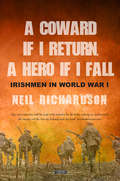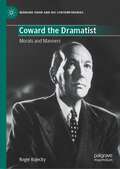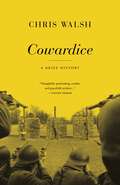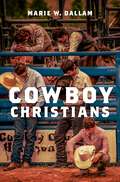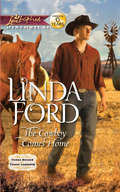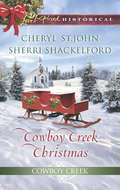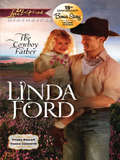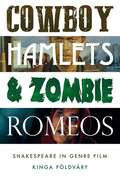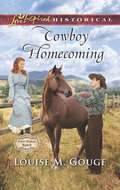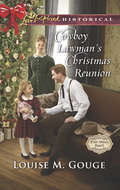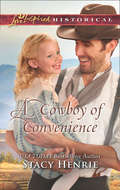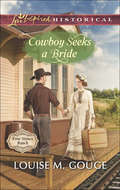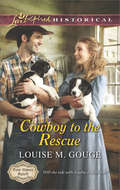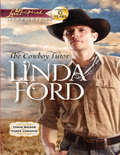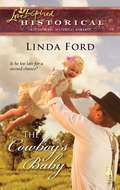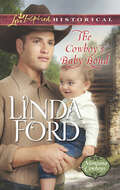- Table View
- List View
A Coward if I Return, A Hero if I Fall: Stories of Irishmen in World War I
by Neil RichardsonIRELAND’S FORGOTTEN LEGACY In 1914-1918, two hundred thousand Irishmen from all religions and backgrounds went to war. At least thirty-five thousand never came home. Those that did were scarred for the rest of their lives. Many of these survivors found themselves abandoned and ostracised by their countrymen, their voices seldom heard. The book includes: The first Victoria Cross Leading the way at Gallipoli and the Somme North and South fighting side by side at Messines Ridge Ireland’s flying aces Brothers-in-arms – heart-rending stories of family sacrifice The lucky escapes of some; the tragic end of others The homecoming – why there was no hero’s welcome An important book that opened up the conversation in Ireland about our role in World War I. The paper version of this book also includes over 300 photographs and items of memorabelia from the lives of these brave men and their families.
Coward the Dramatist: Morals and Manners (Bernard Shaw and His Contemporaries)
by Roger KojeckyDiscussions of Coward’s achievement in the theatre between 1920 and 1966 have tended to stay with the colourful biography. The more analytical literary approach adopted here places Coward’s success in its wider theatrical context, making the connections with the work of other dramatists. He developed his technique according to what worked with theatre audiences. Taking up the well-made play, he brought in a more colloquial dialogue, explored, for instance, the morality and psychology of marriage and free love, and frequently exploited the dramatic possibilities of characters grouped into two camps. The book considers both the ‘pleasant’ and ‘unpleasant’ plays (to use the Shavian terms), and the episodic patriotic plays. It Includes Coward’s ambivalent approach to the ‘theatre of war’ in the 20th century. (123)
Cowardice: A Brief History
by Chris WalshCoward. It's a grave insult, likely to provoke anger, shame, even violence. But what exactly is cowardice? When terrorists are called cowards, does it mean the same as when the term is applied to soldiers? And what, if anything, does cowardice have to do with the rest of us? Bringing together sources from court-martial cases to literary and film classics such as Dante's Inferno, The Red Badge of Courage, and The Thin Red Line, Cowardice recounts the great harm that both cowards and the fear of seeming cowardly have done, and traces the idea of cowardice’s power to its evolutionary roots. But Chris Walsh also shows that this power has faded, most dramatically on the battlefield. Misconduct that earlier might have been punished as cowardice has more recently often been treated medically, as an adverse reaction to trauma, and Walsh explores a parallel therapeutic shift that reaches beyond war, into the realms of politics, crime, philosophy, religion, and love.Yet, as Walsh indicates, the therapeutic has not altogether triumphed—contempt for cowardice endures, and he argues that such contempt can be a good thing. Courage attracts much more of our attention, but rigorously understanding cowardice may be more morally useful, for it requires us to think critically about our duties and our fears, and it helps us to act ethically when fear and duty conflict.Richly illustrated and filled with fascinating stories and insights, Cowardice is the first sustained analysis of a neglected but profound and pervasive feature of human experience.
Cowardice: A Brief History (PDF)
by Chris WalshCoward. It's a grave insult, likely to provoke anger, shame, even violence. But what exactly is cowardice? When terrorists are called cowards, does it mean the same as when the term is applied to soldiers? And what, if anything, does cowardice have to do with the rest of us? Bringing together sources from court-martial cases to literary and film classics such as Dante's Inferno, The Red Badge of Courage, and The Thin Red Line, Cowardice recounts the great harm that both cowards and the fear of seeming cowardly have done, and traces the idea of cowardice’s power to its evolutionary roots. But Chris Walsh also shows that this power has faded, most dramatically on the battlefield. Misconduct that earlier might have been punished as cowardice has more recently often been treated medically, as an adverse reaction to trauma, and Walsh explores a parallel therapeutic shift that reaches beyond war, into the realms of politics, crime, philosophy, religion, and love.Yet, as Walsh indicates, the therapeutic has not altogether triumphed—contempt for cowardice endures, and he argues that such contempt can be a good thing. Courage attracts much more of our attention, but rigorously understanding cowardice may be more morally useful, for it requires us to think critically about our duties and our fears, and it helps us to act ethically when fear and duty conflict.Richly illustrated and filled with fascinating stories and insights, Cowardice is the first sustained analysis of a neglected but profound and pervasive feature of human experience.
The Cowboy at Work: All About His Job And How He Does It
by Fay E. WardA self-described horse wrangler, bronc breaker, and rough-string rider for cow outfits from Canada to the Mexican border, old-time cowboy Fay Ward simply yet vividly describes every detail of the working cowhand's life and job. Want to know how to throw a half-diamond hitch and wield a branding iron? How about learning how to trap wild mustangs and rig and use a saddle? Interested in the recipe for S. B. stew? This authoritative manual explains it all. Illustrated with 600 drawings and diagrams by the author, this is a captivating and informative read for working cowboys, dude ranch wranglers, armchair bronc-busters, and anyone interested in cowboy life and lore.
The Cowboy Capitalist: John Hays Hammond, the American West and the Jameson Raid (Reconsiderations In Southern African History Ser.)
by Charles Van OnselenThe Jameson Raid of 1895–1896 was a pivotal moment in the history of South Africa, linking events from the Anglo-Boer War to the declaration of the Union of South Africa in 1910 and the advent of apartheid in 1948. For over a century, the failed revolution has been interpreted through the lens of British imperialism, with responsibility laid at the feet of Cecil John Rhodes. But rigorous historical analysis points in a different direction – to a plot that drew not only on British jingoes and disgruntled Afrikaner fifth-column elements, but also on the culture of the American West, a culture that embraced wild adventurism, filibustering and the writ of the vigilance committees. In The Cowboy Capitalist, Charles van Onselen challenges a historiography of over 120 years, locating the raid in American rather than British history and forcing us to rethink the histories of at least three countries. He identifies Californian mining engineer John Hays Hammond, a confidant of both Cecil Rhodes and Leander Starr Jameson, as the principal architect of the attempted coup in Paul Kruger’s Boer republic. In so doing, he uncovers the hidden history of the American West on the South African Highveld, situating Hammond’s career against the backdrop of the global expansion of the United States during the Gilded Age.This radical reinterpretation challenges the commonly held belief that the Jameson Raid was quintessentially British and, in doing so, drives splinters into our understanding of South African history at the turn of the 19th century and well beyond.
Cowboy Christians
by Marie W. DallamCowboy Christians examines the long history of cowboy Christianity in the American West, with a focus on the present-day cowboy church movement. Based on five years of historical and sociological fieldwork in cowboy Christian communities, this book draws on interviews with leaders of cowboy churches, traveling rodeo ministries, and chaplains who serve horse racing and bull riding communities, along with the author's first-hand experiences as a participant observer. Marie W. Dallam traces cowboy Christianity from the postbellum period into the twenty-first century, looking at religious life among cowboys on the range as well as its representation in popular imagery and the media. She examines the structure, theology, and perpetuation of the modern cowboy church, and speculates on future challenges the institution may face, such as the relegation of women to subordinate participant roles at a time of increasing gender equality in the larger society. She also explores the cowboy Christian proclivity for blending the secular and the sacred in leisure environments like arenas, racetracks, and rodeos. Dallam locates the modern cowboy church as a descendant of the muscular Christianity movement, the Jesus movement, and new paradigm church methodology. Cowboy Christians establishes the religious significance of the cowboy church movement, particularly relative to twenty-first-century evangelical Protestantism, and contributes to a deeper understanding of the unique Christianity of the American West.
Cowboy Christians
by Marie W. DallamCowboy Christians examines the long history of cowboy Christianity in the American West, with a focus on the present-day cowboy church movement. Based on five years of historical and sociological fieldwork in cowboy Christian communities, this book draws on interviews with leaders of cowboy churches, traveling rodeo ministries, and chaplains who serve horse racing and bull riding communities, along with the author's first-hand experiences as a participant observer. Marie W. Dallam traces cowboy Christianity from the postbellum period into the twenty-first century, looking at religious life among cowboys on the range as well as its representation in popular imagery and the media. She examines the structure, theology, and perpetuation of the modern cowboy church, and speculates on future challenges the institution may face, such as the relegation of women to subordinate participant roles at a time of increasing gender equality in the larger society. She also explores the cowboy Christian proclivity for blending the secular and the sacred in leisure environments like arenas, racetracks, and rodeos. Dallam locates the modern cowboy church as a descendant of the muscular Christianity movement, the Jesus movement, and new paradigm church methodology. Cowboy Christians establishes the religious significance of the cowboy church movement, particularly relative to twenty-first-century evangelical Protestantism, and contributes to a deeper understanding of the unique Christianity of the American West.
The Cowboy Comes Home: The Cowboy Tutor The Cowboy Father The Cowboy Comes Home (Mills And Boon Love Inspired Historical Ser.)
by Linda FordNEXT DOOR TO LOVE
Cowboy Creek Christmas: Mistletoe Reunion / Mistletoe Bride (Mills And Boon Love Inspired Historical Ser.)
by Sherri Shackelford Cheryl St.JohnA Season for Love and Family
The Cowboy Father (Mills And Boon Love Inspired Historical Ser.)
by Linda FordWith Alberta in the grip of the Depression, Louisa Morgan is desperate to bolster her family's finances.
Cowboy Hamlets and zombie Romeos: Shakespeare in genre film (Manchester University Press)
by Kinga FöldváryThe book presents a systematic method of interpreting Shakespeare film adaptations based on their cinematic genres. Its approach is both scholarly and reader-friendly, and its subject is fundamentally interdisciplinary, combining the findings of Shakespeare scholarship with film and media studies, particularly genre theory. The book is organised into six large chapters, discussing films that form broad generic groups. Part I looks at three genres from the classical Hollywood era (western, melodrama and gangster-noir), while Part II deals with three contemporary blockbuster genres (teen film, undead horror and biopic). Beside a few better-known examples of mainstream cinema, the volume also highlights the Shakespearean elements in several nearly forgotten films, bringing them back to critical attention.
Cowboy Hamlets and zombie Romeos: Shakespeare in genre film (Manchester University Press)
by Kinga FöldváryThe book presents a systematic method of interpreting Shakespeare film adaptations based on their cinematic genres. Its approach is both scholarly and reader-friendly, and its subject is fundamentally interdisciplinary, combining the findings of Shakespeare scholarship with film and media studies, particularly genre theory. The book is organised into six large chapters, discussing films that form broad generic groups. Part I looks at three genres from the classical Hollywood era (western, melodrama and gangster-noir), while Part II deals with three contemporary blockbuster genres (teen film, undead horror and biopic). Beside a few better-known examples of mainstream cinema, the volume also highlights the Shakespearean elements in several nearly forgotten films, bringing them back to critical attention.
Cowboy Homecoming: The Rancher's Surprise Triplets, Cowboy Homecoming, Undercover Sheriff, Family Of Convenience (Four Stones Ranch #5)
by Louise M. GougeRocky Mountain Proposal
Cowboy Lawman's Christmas Reunion: Montana Bride By Christmas Cowboy Lawman's Christmas Reunion Mistletoe Mommy A Mistaken Match (Four Stones Ranch #6)
by Louise M. GougeThe Sheriff’s Second Chance
Cowboy Life: Reconstructing an American Myth
by William W SavageFirst published in 1975 and now in paperback, Cowboy Life continues to be a landmark study on the historical and legendary dimensions of the cowboy. The central figure in American mythology, the cowboy can be seen everywhere: in films, novels, advertisements, TV, sports, and music. Though his image holds little resemblance to the historical cowboy, it is important because it represents many qualities with which Americans identify, including bravery, honor, chivalry, and individualism. Accounts by Joseph G. McCoy, Richard Irving Dodge, Charles A. Siringo, and many others detail the daily trials and tribulations of cowboy life on the southern Great Plains-particularly Texas, Indian Territory, and Kansas-from the 1860s to around 1900. And in a new Afterword, editor William W. Savage, Jr. discusses the directions the cowboy myth has taken in the past two decades, as well as the impact the "new Western history" and films such as Lonesome Dove have had on popular culture. This edition contains a new preface and afterword by the author.
A Cowboy Of Convenience: Romancing The Runaway Bride A Cowboy Of Convenience Orphan Train Sweetheart Handpicked Family (Mills And Boon Love Inspired Historical Ser.)
by Stacy HenrieGroom by Agreement
Cowboy Seeks a Bride: Wolf Creek Father Cowboy Seeks A Bride Falling For The Enemy Accidental Fiancee (Four Stones Ranch #2)
by Louise M. GougeCOURTED BY A COWBOY
Cowboy to the Rescue: His Most Suitable Bride Cowboy To The Rescue The Gift Of A Child A Home For Her Heart (Four Stones Ranch #1)
by Louise M. GougeCAPTIVATED BY THE COWBOY
The Cowboy Tutor: The Cowboy Tutor The Cowboy Father The Cowboy Comes Home (Three Brides for Three Cowboys #1)
by Linda FordLesson One: Listen To Your Heart
Cowboy Way: An Exploration of History and Culture
by Paul H CarlsonThe lives of American cowboys have been both real and mythic. This work explores cowboy music dress, humour, films and literature in sixteen essays and a bibliography. These essays demonstrate that the American cowboy is a knight of the road who, with a large hat, tall boots and a big gun, rode into legend and into the history books.
The Cowboy Who Caught Her Eye (Mills And Boon Historical Ser.)
by Lauri RobinsonTHE SHOPKEEPER’S SHAME Pregnant and unmarried, Molly Thorson knows her livelihood is under threat. The last thing she needs is a distracting cowboy swaggering into view. Especially one who knows she has a secret and still looks at her with desire in his eyes.
A Cowboy Worth Claiming (The Worths of Red Ridge #3)
by Charlene SandsCowboy Chance Worth gets more than he bargains for when he saves damsel in distress Lizzie Mitchell. He has come to Red Ridge, Arizona, to rescue her family's failing ranch and find Lizzie a suitable husband. Too bad it wouldn't be honorable to keep the little spitfire for himself!
The Cowboy's Baby: The Cowboy's Baby Bond Prairie Cowboy (Mills And Boon Love Inspired Ser.)
by Linda FordWhen he left two years before, Colby Bloxham was running from his past, and his pain. Now he's ready to face his responsibilities…and make some long-overdue amends to his baby daughter and the woman who took her in–Colby's former sweetheart, Anna Caldwell.
The Cowboy's Baby Bond: The Cowboy's Baby Bond Prairie Cowboy (Montana Cowboys #2)
by Linda FordAn Honorable Cowboy Determined single mother Willow Reames has one goal—to reunite with her sisters and begin a new life with them and her infant son. But when she’s unexpectedly stranded in the Montana wilderness—with her siblings nowhere in sight—she needs to rely on the kindness of Johnny Harding.
